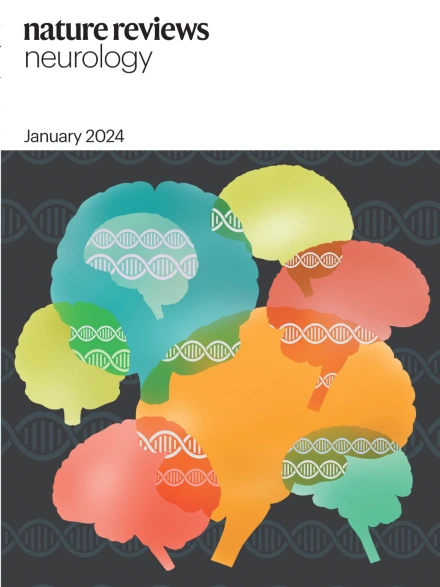Parkinson disease is a fatty acidopathy.
IF 33.1
1区 医学
Q1 CLINICAL NEUROLOGY
引用次数: 0
Abstract
On the basis of extensive mechanistic research over three decades, Parkinson disease (PD) and related synucleinopathies have been proposed to be combined proteinopathies and lipidopathies. Evidence strongly supports a physiological and pathogenic interplay between the disease-associated protein α-synuclein and lipids, with a demonstrable role for lipids in modulating PD phenotypes in the brain. Here, we refine this hypothesis by proposing PD to be a disease specifically involving metabolic dysregulation of fatty acids, a 'fatty acidopathy'. We review extensive findings from many laboratories supporting the perspective that PD centres on fatty acid dyshomeostasis - alterations in the fatty acid-ome - as the critical feature of lipid aberration in PD and other α-synucleinopathies. This construct places transient α-synuclein binding to fatty acid side chains of cytoplasmic vesicles as a principal contributor to the biology of PD-relevant α-synuclein-membrane interactions. We propose that α-synuclein-fatty acid interactions in the fatty acid-rich brain are interdependent determinants of the gradual progression from neuronal health to PD, with attendant therapeutic implications.帕金森病是一种脂肪性酸中毒。
在近三十年的广泛机制研究的基础上,帕金森病及其相关的突触核蛋白病被认为是蛋白质病和脂质病的结合。证据强烈支持疾病相关蛋白α-突触核蛋白与脂质之间的生理和致病相互作用,脂质在调节PD脑表型中具有明显的作用。在这里,我们完善了这一假设,提出PD是一种特别涉及脂肪酸代谢失调的疾病,即“脂肪酸酸中毒”。我们回顾了来自许多实验室的广泛研究结果,这些研究结果支持PD以脂肪酸失衡为中心的观点,即脂肪酸组的改变是PD和其他α-突触核蛋白病中脂质畸变的关键特征。该结构将α-突触核蛋白与细胞质囊泡脂肪酸侧链的瞬时结合作为pd相关α-突触核蛋白膜相互作用的生物学主要贡献者。我们认为富含脂肪酸的大脑中α-突触核蛋白-脂肪酸的相互作用是神经元健康逐渐发展为PD的相互依赖的决定因素,并具有相应的治疗意义。
本文章由计算机程序翻译,如有差异,请以英文原文为准。
求助全文
约1分钟内获得全文
求助全文
来源期刊

Nature Reviews Neurology
医学-临床神经学
CiteScore
29.90
自引率
0.80%
发文量
138
审稿时长
6-12 weeks
期刊介绍:
Nature Reviews Neurology aims to be the premier source of reviews and commentaries for the scientific and clinical communities we serve. We want to provide an unparalleled service to authors, referees, and readers, and we work hard to maximize the usefulness and impact of each article. The journal publishes Research Highlights, Comments, News & Views, Reviews, Consensus Statements, and Perspectives relevant to researchers and clinicians working in the field of neurology. Our broad scope ensures that the work we publish reaches the widest possible audience. Our articles are authoritative, accessible, and enhanced with clearly understandable figures, tables, and other display items. This page gives more detail about the aims and scope of the journal.
 求助内容:
求助内容: 应助结果提醒方式:
应助结果提醒方式:


